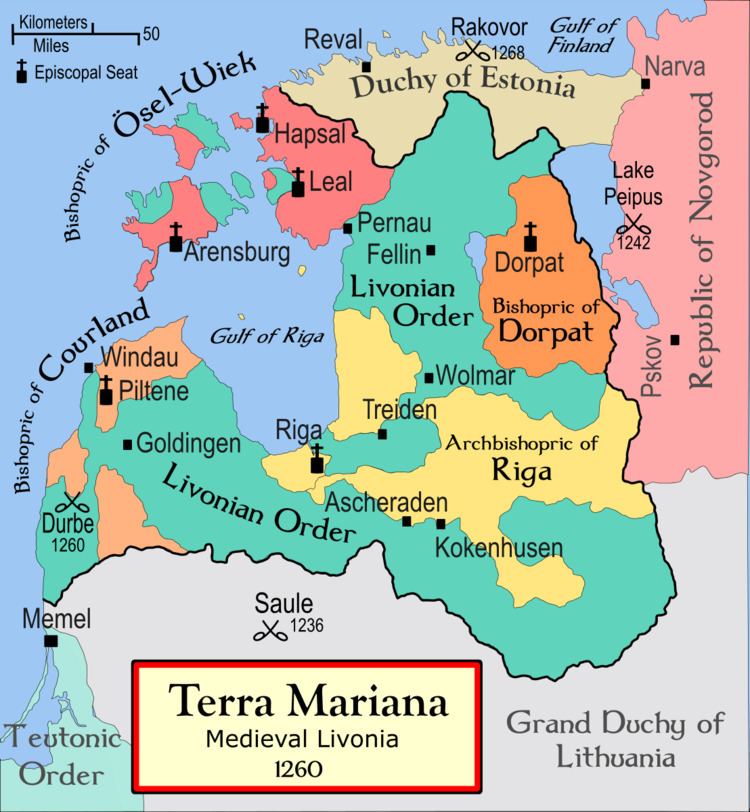1234-1236/37 Engelbert (1st) Established 11 February 1234 Date dissolved April 20, 1562 | Government Principality 1560-1583 Magnus (last) Founded 1234 | |
 | ||
Languages | ||
The Bishopric of Courland (Latin: Episcopatus Curoniensis, Low German: Bisdom Curland) was the second smallest (4500 km2) ecclesiastical state in the Livonian Confederation founded in the aftermath of the Livonian Crusade. During the Livonian War in 1559 the bishopric became a possession of Denmark, and in 1585 sold by Denmark to Poland-Lithuania.
Contents
History
In ancient times the Curonians, a Baltic tribe, inhabited Courland and had strong links with the maritime tribes in both sides of the Baltic sea. In 1230 Curonian king Lammechinus signed an agreement with the vice-legat Baldwin of Alna (Baudoin d’Aulne) of the Pope Gregory IX about the voluntary conversion of his people to Christianity and receiving the same rights as the inhabitants of Gotland. In 1234 Dominican monk Engelbert was appointed to be the first bishop of Courland. In 1242 the area of Courland passed under the influence of the Teutonic Knights owing to the amalgamation of this order with that of the Brethren of the Sword in 1237. In 1253 the territory of Courland was divided between the Bishopric of Courland and the Livonian branch of the Order of Teutonic Knights. After severe defeat of knights in the Battle of Durbe the Bishop Heinrich of Lützelburg left Courland in 1263 and the new bishop Edmund of Werth returned in his bishopric only after suppression of Curonian and Semigallian insurgencies in 1290.
During the Livonian War (1558–1582), under the increasing pressure of Muscovy, the Livonian Confederation dissolved. In 1559 the Bishop of Courland and Ösel-Wiek Johannes V von Münchhausen sold his lands to King Frederick II of Denmark for 30,000 thalers. The Danish king gave the territory to his younger brother Duke Magnus of Holstein. Duke Magnus was crowned King of Livonia in 1570. In 1577, having lost Ivan’s favor and receiving no support from his brother, Magnus called on the Livonian nobility to rally to him in a struggle against foreign occupation. He was attacked by Ivan’s forces and taken prisoner. On his release, he renounced his royal title.
Magnus spent the last six years of his life at the castle of Pilten, where he died as a pensioner of the Polish crown. He promised to transfer it to the Duchy of Courland after his death, but this plan failed and only later Wilhelm Kettler did regain this district. After Magnus of Livonia died in 1583, Polish-Lithuanian Commonwealth invaded his territories in the Duchy of Courland and Frederick II of Denmark decided to sell his rights of inheritance.
